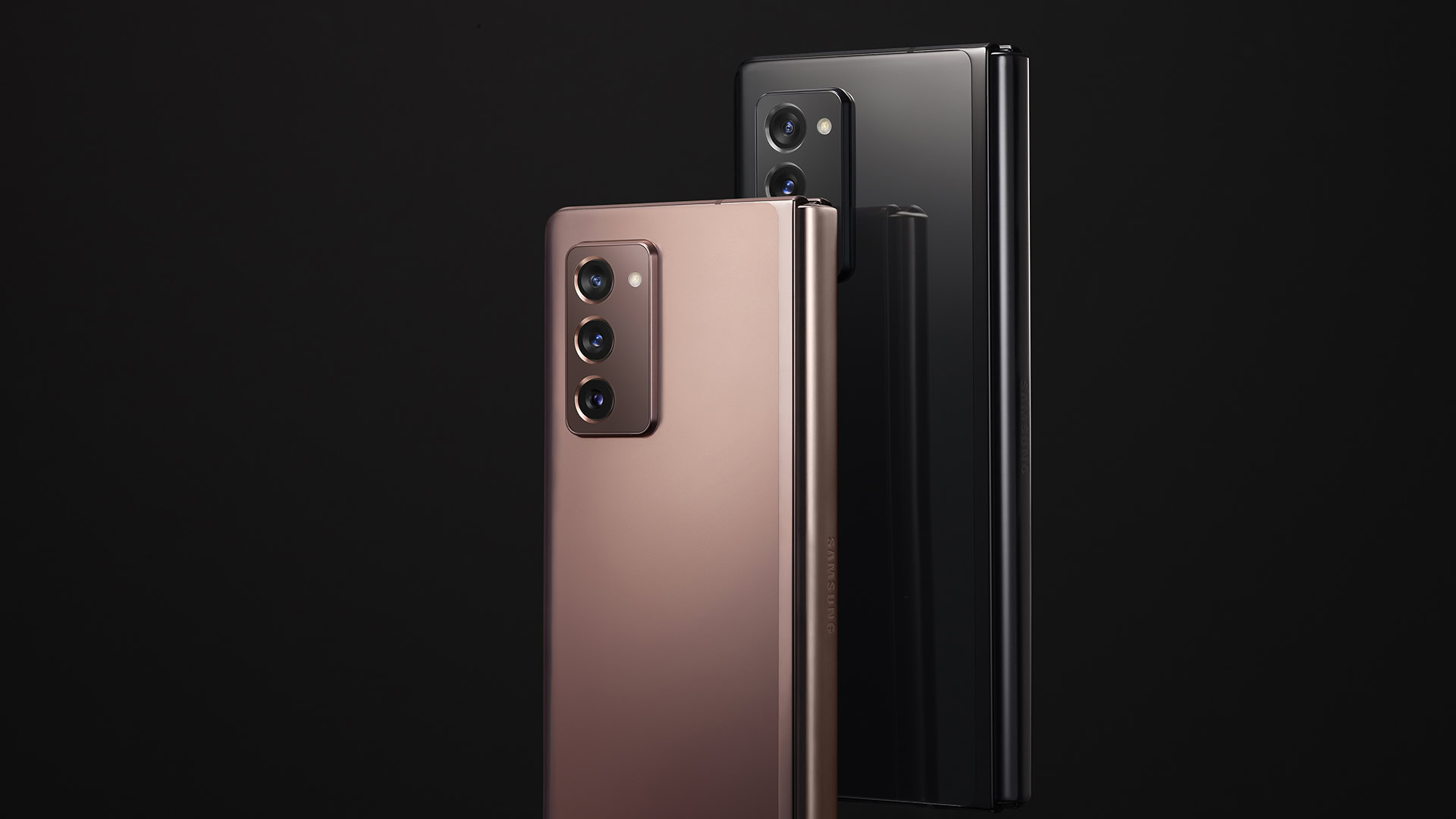Affiliate links on Android Authority may earn us a commission. Learn more.
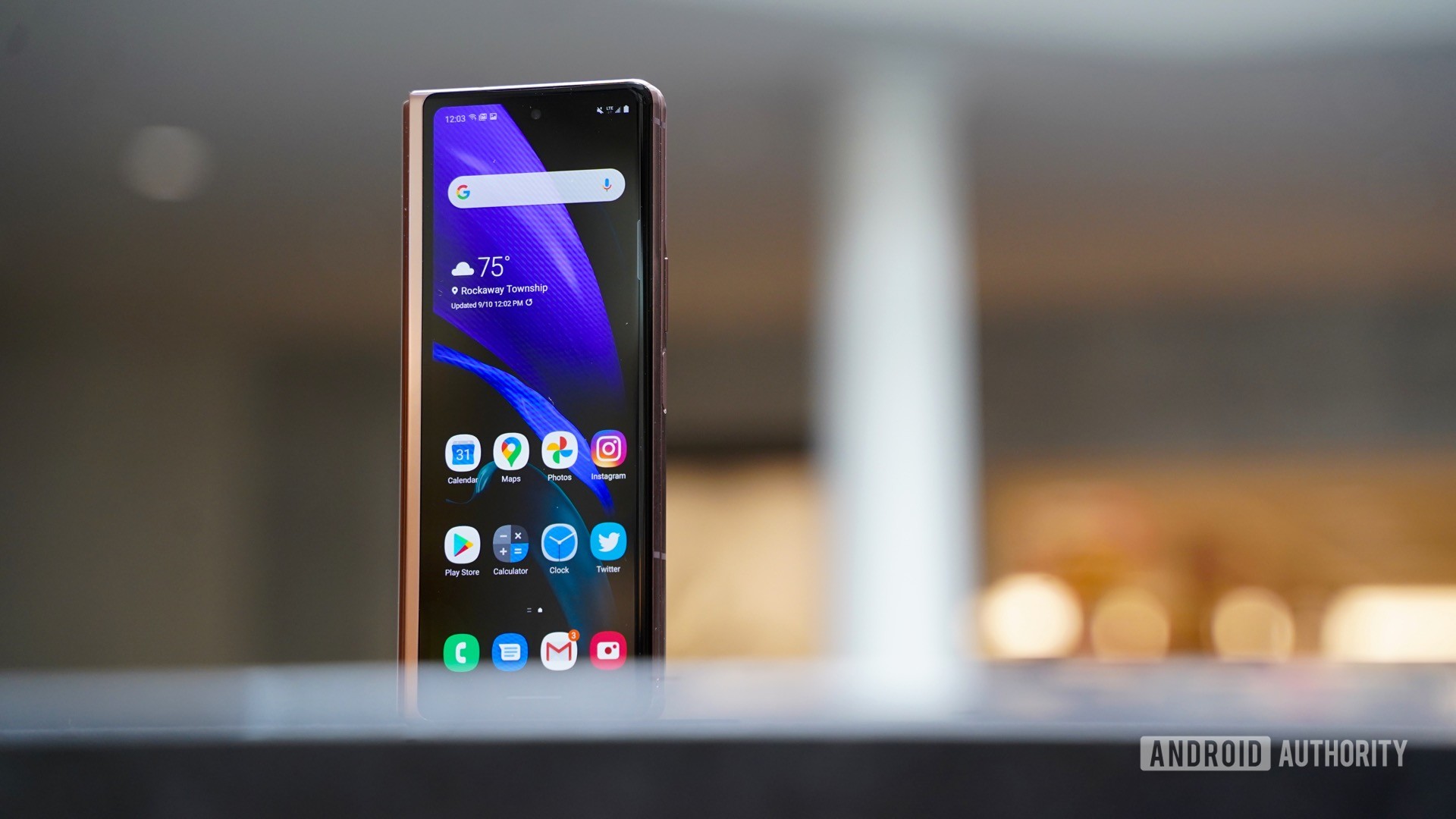


Samsung Galaxy Z Fold 2
MSRP:
What we like
What we don't like
Our scores

Samsung Galaxy Z Fold 2
The Galaxy Z Fold 2 sees Samsung hitting its stride. Building on the foundation set by last year’s imperfect Galaxy Fold, the Z Fold 2 is a better phone in every way. Samsung managed to make meaningful changes big and small that all contribute to a more seamless and enjoyable experience. From the improved outer display, to the bolstered materials and refined build quality, Samsung struck all the right notes in its powerful sequel.
That doesn’t mean the Galaxy Z Fold 2 is perfect, nor is it for everyone. At $2,000 it costs more than many laptops. Is it the right phone for you? Let’s find out in the Android Authority Samsung Galaxy Z Fold 2 review.
Samsung Galaxy Z Fold 2 review: Who is this phone for?
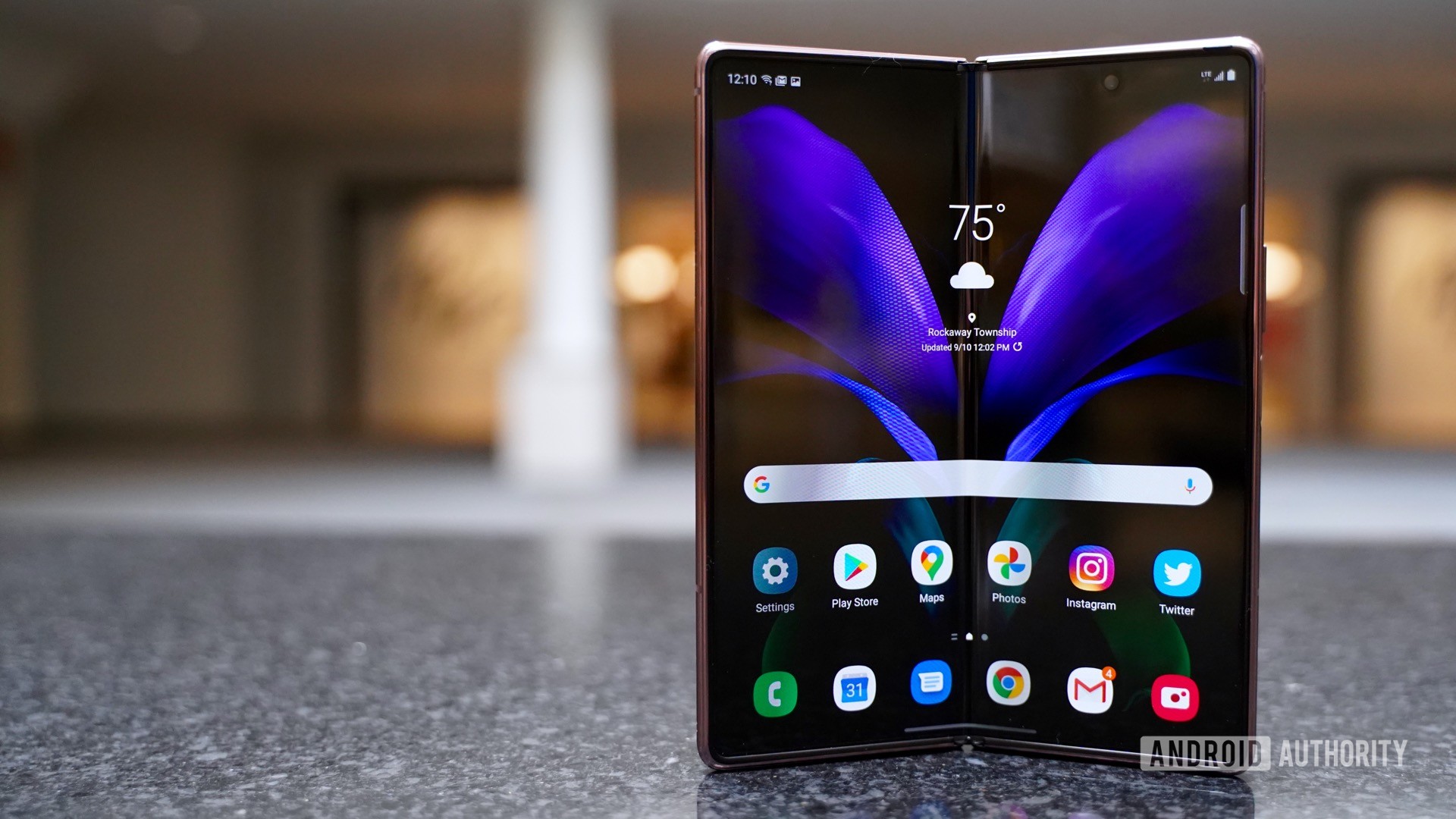
Samsung already has a phone for everyone. Whether you need affordable 5G, a high-end shooter, or a tried-and-true productivity workhorse, there’s a Samsung slab in the stable for you.
Samsung’s foldable phones stand apart. Where the Z Flip is a nostalgic throwback clamshell to yesteryear, the Z Fold 2 is a monster meant to solidify the viability of a burgeoning form factor: the phone that opens to become a tablet.
Thus, the Z Fold 2 is a phone for those who want a powerful smartphone and a tablet in one device. It’s also for people who can afford nice, expensive things and don’t mind paying for the absolute in premium experiences.
Design
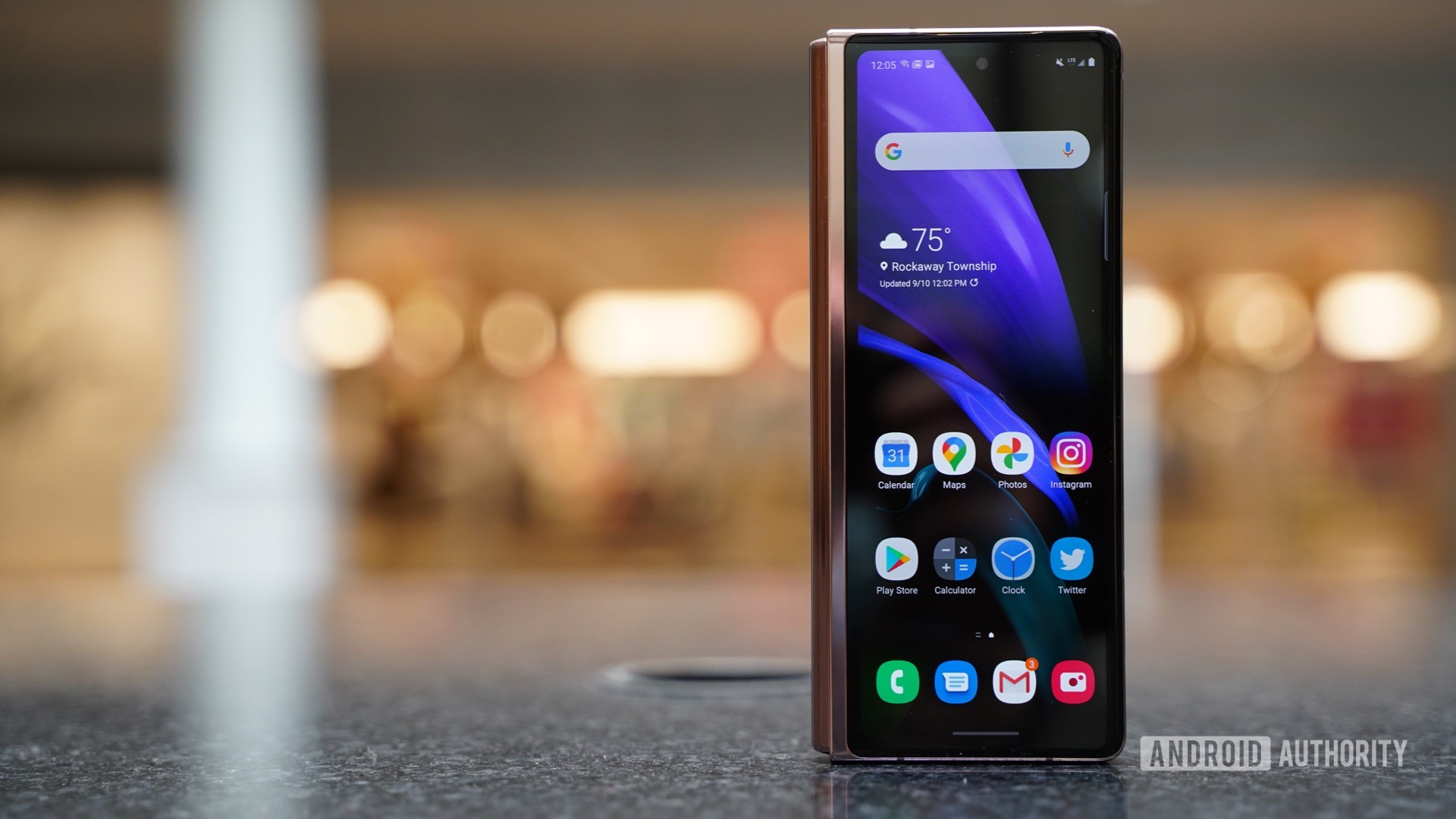
- Folded: 68.0 x 159.2 x 16.8mm
- Unfolded: 128.2 x 159.2 x 6.9mm
- 282g
- Mystic Black, Mystic Bronze
Everything about the Z Fold 2 is better than the original. Everything. The materials, the design, the execution, it’s all there. If you’re seeking a high-end handset, the Fold 2 delivers.
Let’s start with materials. Last year’s Z Fold had a number of plastic parts that cheapened the experience just a bit. The Z Fold 2 updates the entire chassis to metal and the latest Gorilla Glass, and the difference is palpable. The entire phone comes across as substantial, stable, and solid. It feels like you’re actually getting what you pay for.
Of course, the phone is a massive brick and you know it when it’s in your pocket. It’s heavy and quite thick when folded in half. There’s a narrow gap in between the two halves when folded. It’s more than enough to slide a few pieces of paper in there, but the gap is less that of last year’s phone.
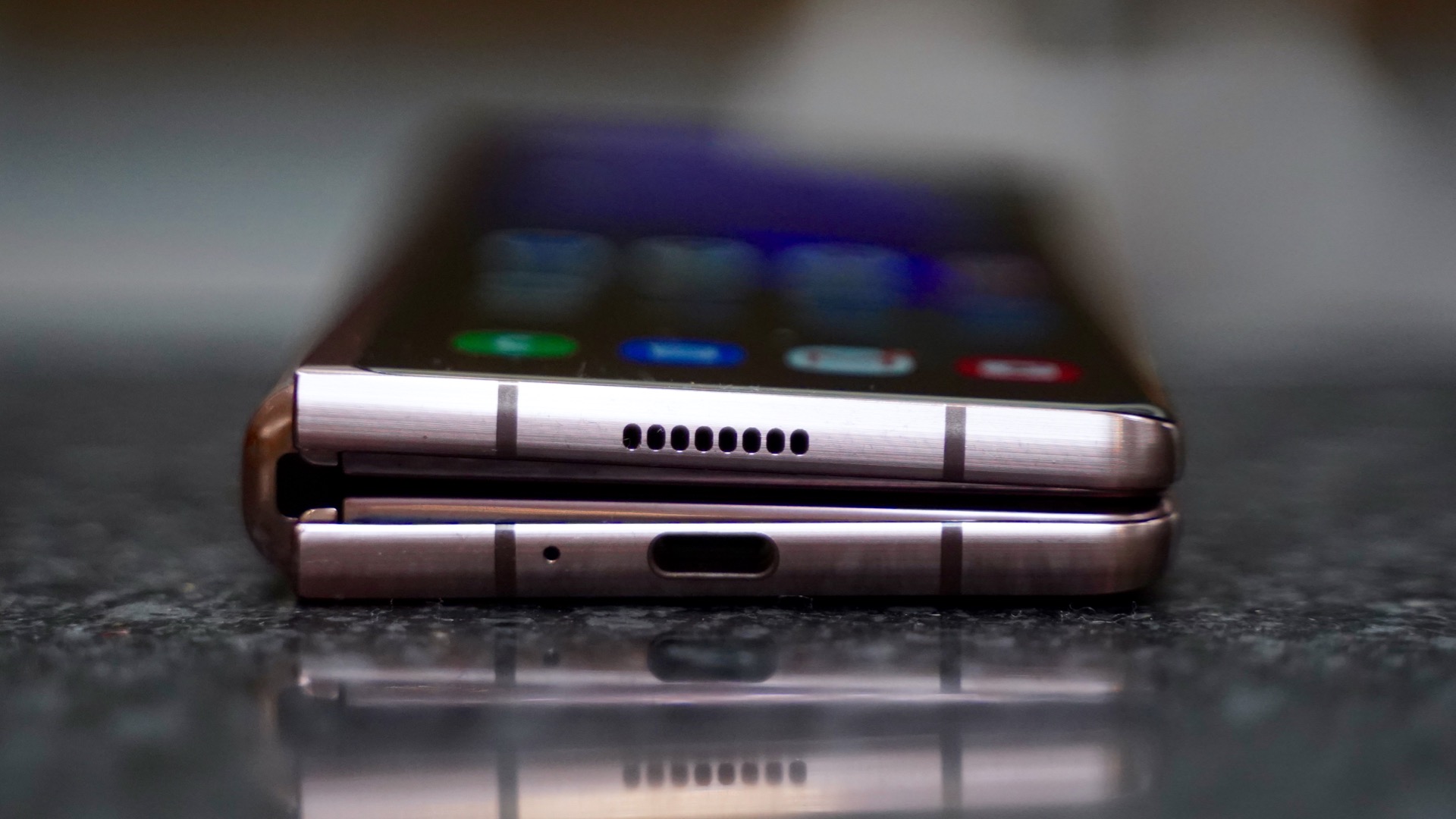
Each half of the phone is framed in a C-shaped piece of aluminum. The metal features a brushed finish and a slightly curved profile to help with hand feel. Glass pieces are fitted into the outer portions of the frame to form the front and back panels. The glass is curved just a bit where it reaches the metal. Uniformity is clutch here.
I had doubts about the longevity of the original Fold's hinge. I don't with the Z Fold 2.
The two halves of the frame are joined at the wholly redesigned hinge, which has a metal cover and disappears entirely when the phone is opened all the way. I really like the seamlessness of this design. Samsung carried over the stable hinge idea from the Z Flip. This allows the Z Fold 2 to sit open at any angle you wish. It can stand in tent mode, act as a mini laptop, or open to a full slate. There are no grinding parts, there is no scraping sound. The hinge simply feels fluid and strong. I had doubts about the longevity of the original Fold’s hinge. I don’t with the Z Fold 2. I particularly like how the two C-shaped frame elements come together to form a new spine down the middle of the device when opened. The phone is still slightly wedge shaped when folded. Slightly.
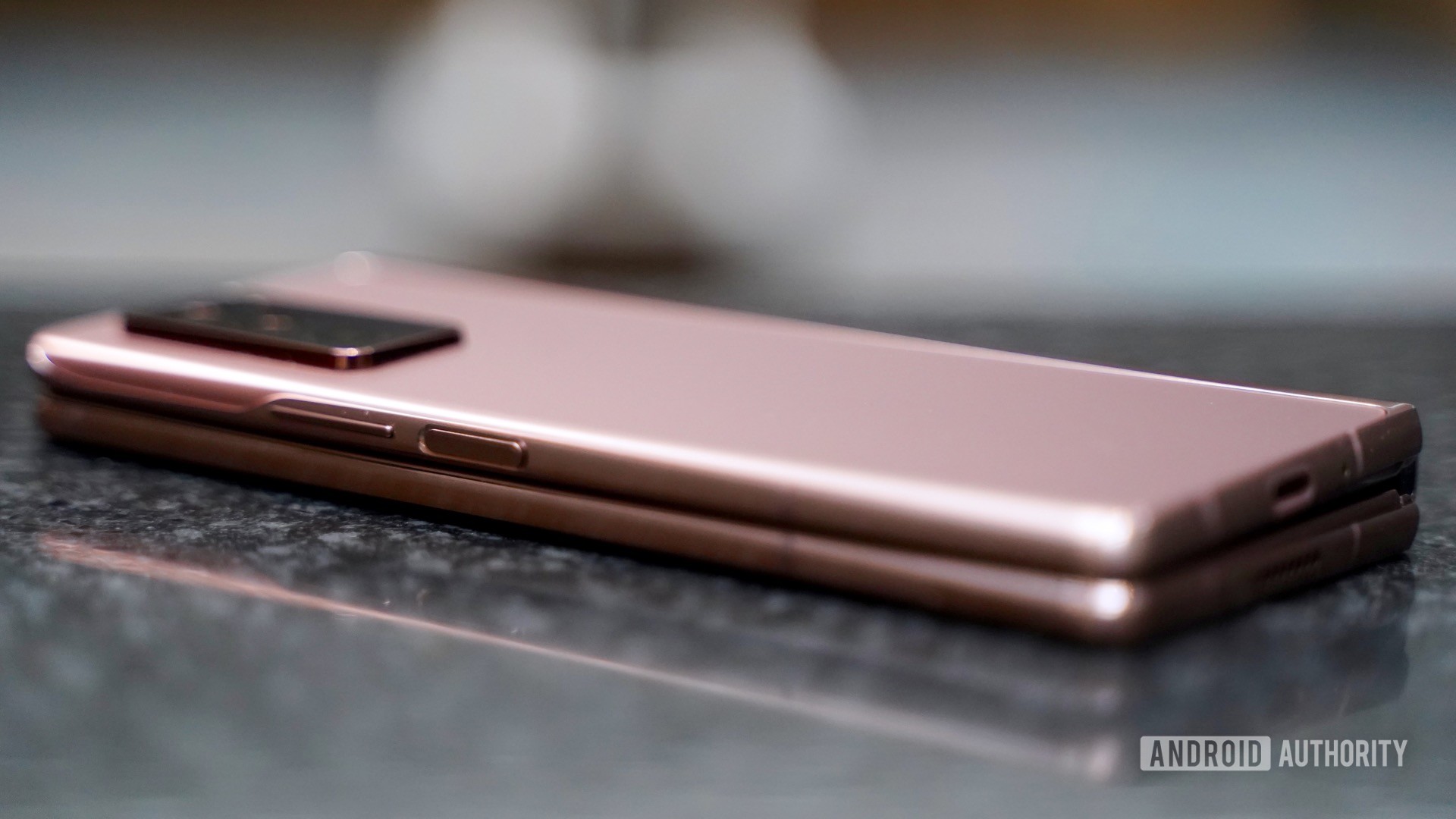
Some functional elements along the outer edge go a long way to improving usability. Foremost, the combined power button/fingerprint sensor on the right edge is pretty much flawless. The combo button makes more sense than the separate keys on last year’s phone. It’s a quick and reliable way to unlock the phone. The volume toggle is just above the power button and it also works well. Samsung tucked the SIM card tray into the side edge. There’s no expandable storage. You’ll see a speaker and microphone on the top edge that are mirrored on the bottom edge. The bottom also holds the USB-C port. There’s no headphone jack on this $2,000 puppy.
The rear surface is covered in textured glass just like the Note 20 line. I like the feel of it. A gigantic camera module in the upper corner is hard to miss. It looks almost identical to that of the Note 20 series, meaning there are three large lenses arranged in a vertical strip with a flash off to one side. It’s not as egregious as the module of the Note 20 Ultra, but it’s pretty close.
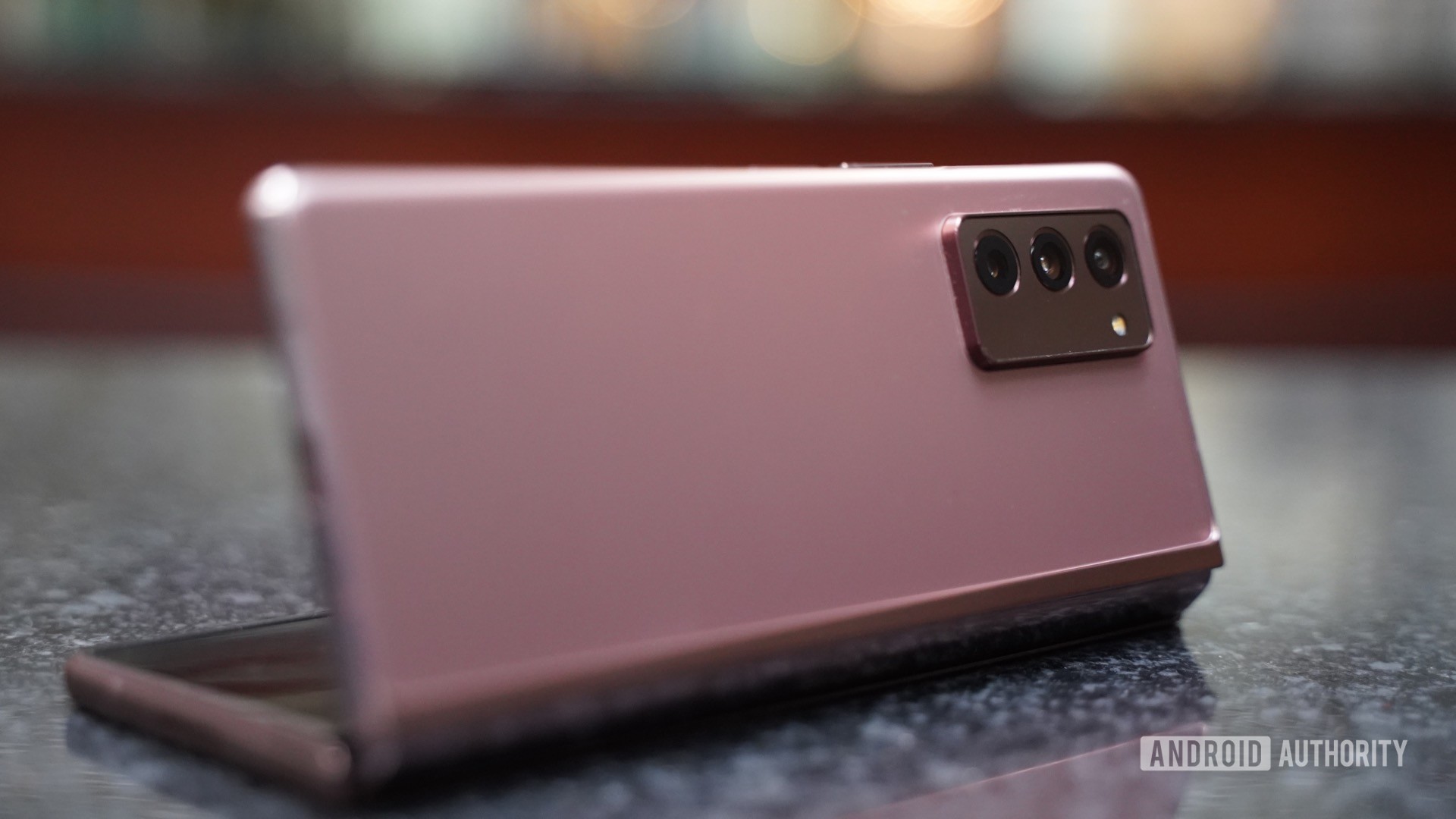
When fully opened, the interior is all screen. Samsung eliminated the ugly notch of last year’s Fold, giving Z Fold 2 owners a truly edge-to-edge screen experience. Holding and using the opened Z Fold 2 takes getting used to. It’s an awkward, nearly square-ish shape. That said, as an avid tablet user I was able to adjust fairly quickly. And yes, the Z Fold 2 accomplished its main mission. Rather than setting my phone aside and switching to my iPad most evenings (for the larger screen), I simply opened the Z Fold 2 and used it instead.
Perhaps the biggest omission as far as flagship features are concerned is ingress protection. The phone has no IP rating and is not safe from being dropped into water or other liquids. I’d keep it off the beach, too, as you don’t want particles getting into the hinge mechanism or between the halves of the inner display.
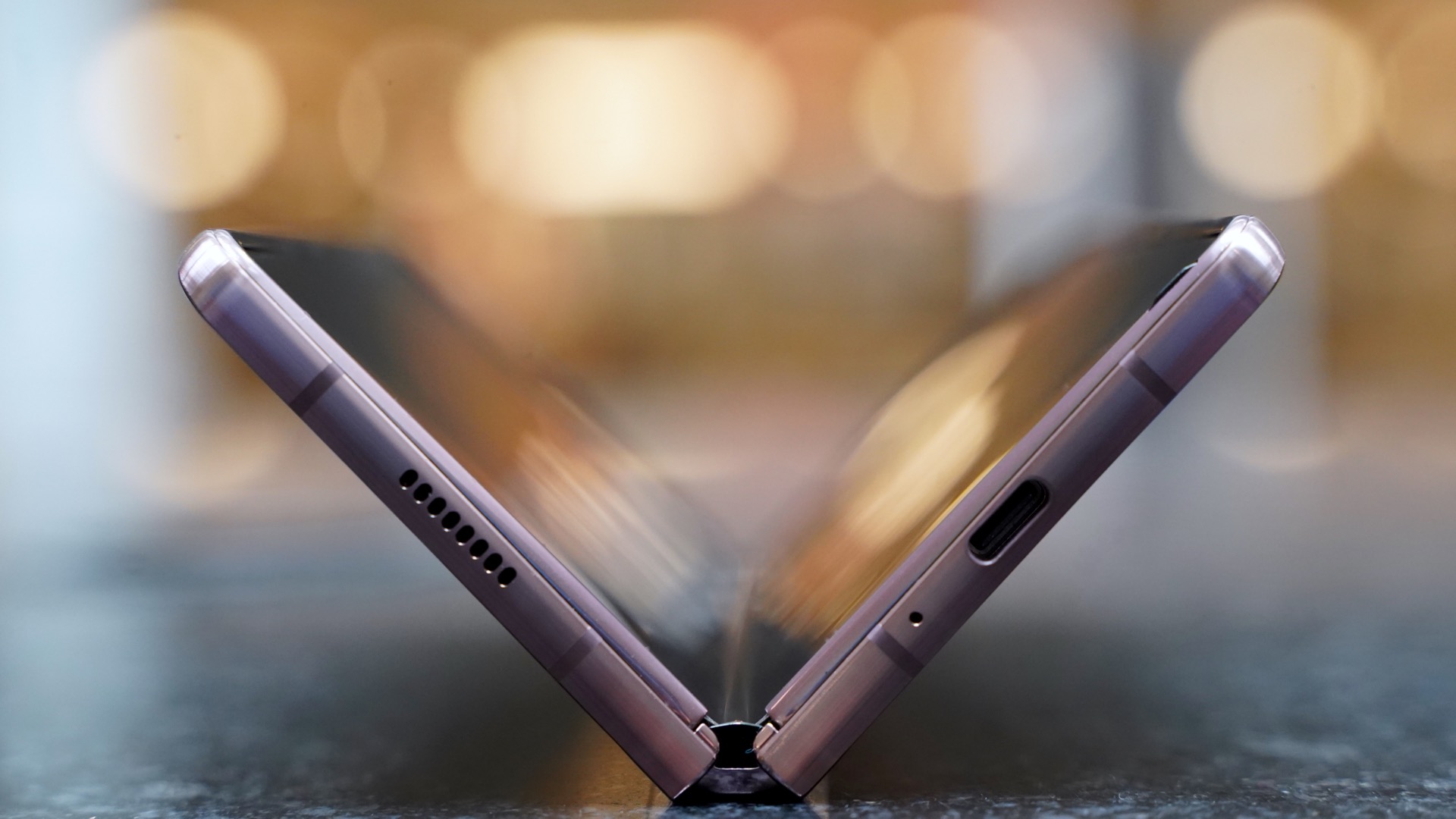
See also: The best foldables you can buy
Samsung dutifully listened to all the complaints about the original Fold and corrected them in just the right ways. Literally every aspect of the Z Fold 2 is superior to the original.
Display
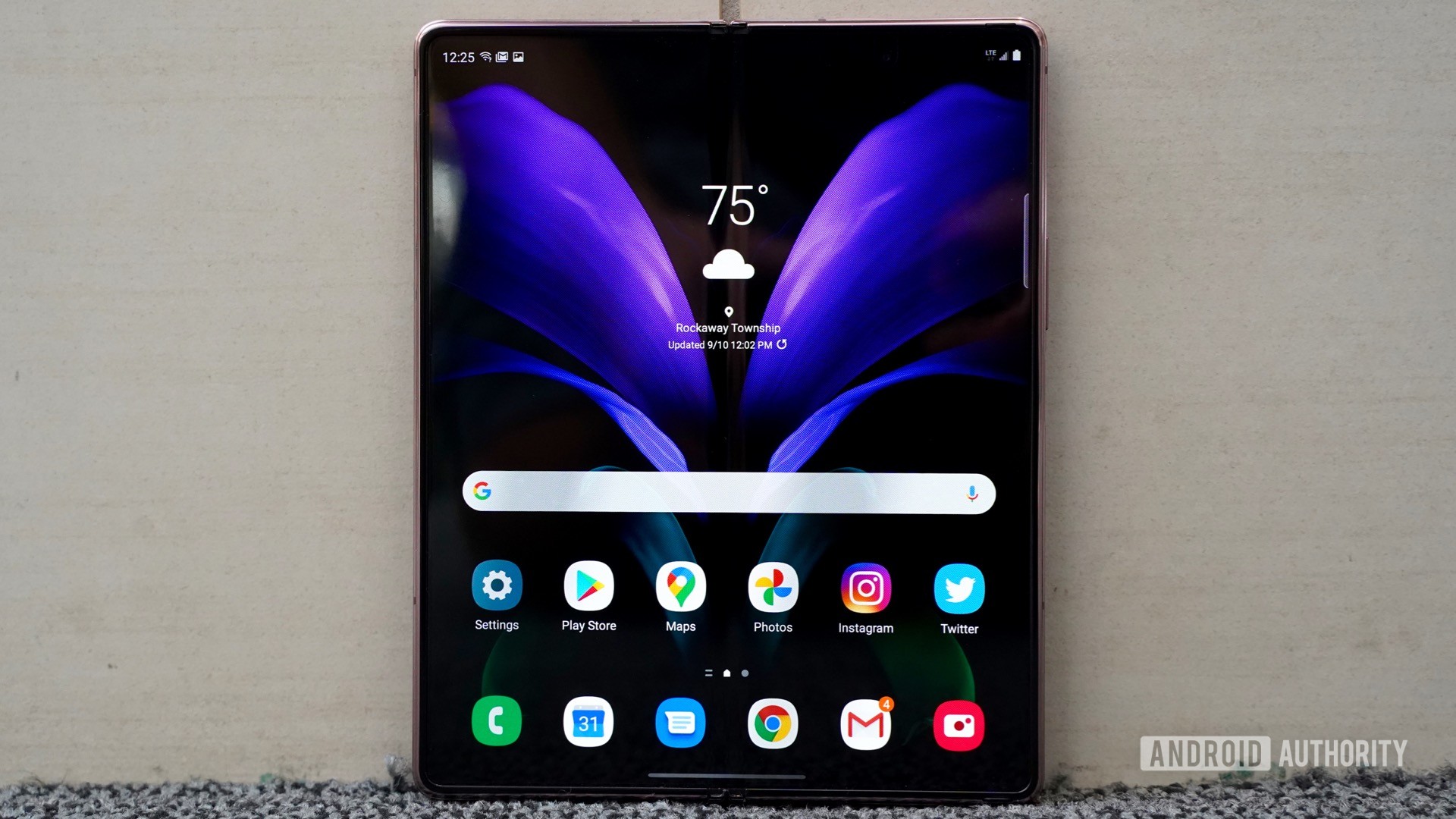
- Outer:
- 6.2-inch HD+ AMOLED
- 2,260 x 816 resolution
- 386ppi
- 25:9 aspect ratio
- 60Hz refresh rate
- Inner:
- 7.6-inch QXGA+ AMOLED
- 2,208 x 1,768 resolution
- 373ppi
- 22.5:18 aspect ratio
- 120Hz refresh rate
Outer
The outer display of the original Galaxy Fold was too slim, off-center, and, while not entirely useless, it was no fun to use. Samsung fixed it. The outer display of the Z Fold 2 is exactly what the phone needed. It’s still really slim, but rather than cover a small 4.6-inch strip of the phone’s outer face, it now stretches 6.2 inches from edge to edge. It’s hard to put into words how much better this improved screen truly is. It boosts the user experience by leaps and bounds.

The AMOLED panel itself is plenty bright, was easy to see outdoors, and worked really well as a camera viewfinder. The resolution is sharp, though colors come across as a bit oversaturated — typical for a Samsung. Viewing angles were quite good and reflectivity is kept to a minimum. The user-facing camera is hidden in a punch hole near the very top of the display. It’s tiny and easy to miss unless you’re looking for it.
As a whole, the new Cover Display is exactly what the Z Fold 2 needed.
Inner
The biggest problem with the screen of the original Galaxy Fold was the unsightly notch in the upper right corner. Like the outer display, Samsung fixed it. The inner display now presents a seamless wall of pixels that runs from top to bottom and side to side. The user-facing camera is now a small punch hole that’s barely noticeable. This update makes the phone feel like a more complete and cohesive device.
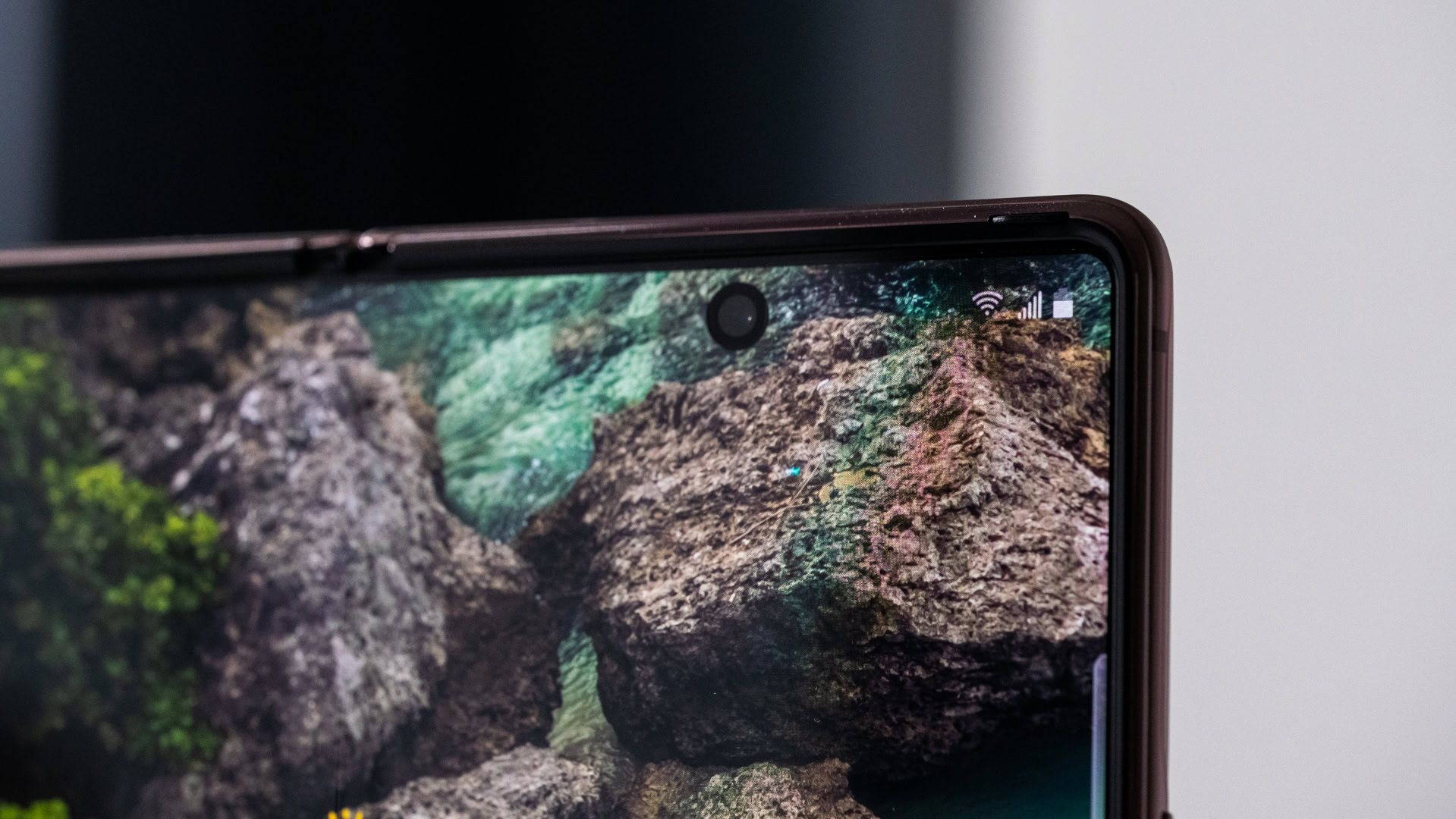
At 7.6 inches across the diagonal, it’s a whopper of a screen. It has the same variable 120Hz refresh rate of the Note 20 Ultra. This makes it smooth when scrolling through lists and up and down web sites. The variable refresh rate means you’ll see 11Hz rates when browsing the web, 24Hz rates when watching videos, and 120Hz rates when gaming and so on. This is meant to help manage power consumption, which we’ll touch on below. Essentially, your eyes cannot tell when the refresh rate changes. The screen comes across as fluid all the time.
I used the display both indoors and out and found it to be plenty bright under the sun. In fact, I rarely had to set the brightness more than half way up. Viewing angles are excellent. I will note that polarized sunglasses impact visibility some, though this is typical with Samsung AMOLEDs.
Related: Refresh rates explained
It’s a great screen that you’re going to love.
Performance
- Snapdragon 865 Plus
- Adreno 650
- 12GB RAM
- 256GB UFS 3.1 storage
- 4,500mAh battery
- Wireless charging
- 25W Rapid charging
- Wireless Power Share
Processor
It should be no surprise to learn that the Z Fold 2 has the best silicon inside. Not only is it using the fastest processor from Qualcomm, but Samsung is offering a generous amount of memory and storage with the phone. (As well it should, since there’s no expandable storage.)
The phone is fast. Very fast. In daily use, I didn’t encounter any slow downs or lagging. The Z Fold 2 flew through every operation with ease. Screen transitions were smooth, and the 120Hz screen never stuttered once. Games such as Asphalt and PUBG worked brilliantly and looked immersive on the large display.
In our usual spate of benchmark testing, the Z Fold 2 bettered 99% of other phones. It’s a performant beast that should keep you chugging along no matter the task at hand.
Battery
I was truly worried the 4,500mAh battery wouldn’t be up the task, but I was wrong. No matter how I used the Z Fold 2, it consistently delivered a full day’s use, with some room to spare. There was often enough left in the tank at the end of the day to ensure it would still have a little juice the following morning. Screen-on time ranged from 6 to 7 hours, depending, but was never less than 6h. Considering the size and refresh rate of the screen, that’s saying something. Samsung did a great job tuning its software. You can tweak it further for even more power savings if needed.
Thankfully the phone supports rapid charging. Plugging the phone in for as little as 30 minutes nets you a 45% charge, while 60 minutes gets you to 78% and 90 minutes will take you all the way to 100%. The phone charges wirelessly at a slower rate, but it’s still quick enough. Last, the phone supports wireless power share to give some juice to accessories such as the Galaxy Buds Live. It’s slow at just 4.5W, however, so don’t be surprised if your headphones take some time to juice up.
Bottom line, the Z Fold 2 delivers all the battery life most people — even power users — will need to get through their day.
Software
- Android 10
- Samsung One UI 2.5
The Cover Display is the screen that you see and interact with when the Z Fold 2 is shut. It acts like a normal smartphone screen. The always-on display shows the time, date, and notification icons. You can select the clock style, what notification content is visible, and otherwise customize it just as you would the Galaxy S20 or Note 20. I like that the Cover Display allows you to access the app drawer, main settings, notifications, quick settings, and even app switching via the multitasking tool. You can go through an entire day and only use the Z Fold 2’s Cover Display.
Most importantly, this all felt natural, like it was meant to be. It didn’t feel quite natural on the original Cover Display of last year’s Fold. I never knew when it was best to use the outer screen versus the inner display. With the Z Fold 2, I no longer questioned when it was most effective to use the outer screen versus the inner screen.
With the Z Fold 2, I no longer questioned when it was most effective to use the outer screen versus the inner screen.
Thankfully, the bulk of apps on the Cover Display transitioned seamlessly to the inner display, thanks to App Continuity. Samsung worked with developers to ensure that apps can move from one screen to the other without interrupting the experience. Not every app is supported, but I didn’t encounter any that weren’t.
The larger display encourages you to spend a lot more time with the Z Fold 2. Sorting between messaging, calendaring, and other tasks felt natural enough, but the real power is found in multitasking.
There’s a nifty tray that slides out from the right edge so you can drag apps out onto the larger screen. I appreciate that the phone supports up to three apps on the main display at once. In this arrangement, one app fills half the screen and two apps fill one-quarter of the screen. I was able to run Chrome, Gmail, and Slack with no problem. Let me tell you how helpful that can be. It’s a breeze to juggle the screens to make one app larger or smaller as needed. You can drag content between open windows.
Otherwise, it’s a basic Android experience. Some apps really shine on the larger display, such as Gmail, Twitter, and Chrome. Some don’t. Instagram was fussy, as was Lightroom. These apps opened in smaller windows because they couldn’t scale to the nearly square shape of the display. Still, the majority of apps looked good.
See also: Android 11 is just a subtle upgrade
What I like most about all of this is that it’s easy. There’s nothing to figure out. Once you’ve mastered setting up several app windows, managing app pairs and trios is a breeze. Apart from perhaps the Note 20 Ultra and its S Pen, the Samsung Galaxy Z Fold 2 is among the best multitasking phones out there.
Camera
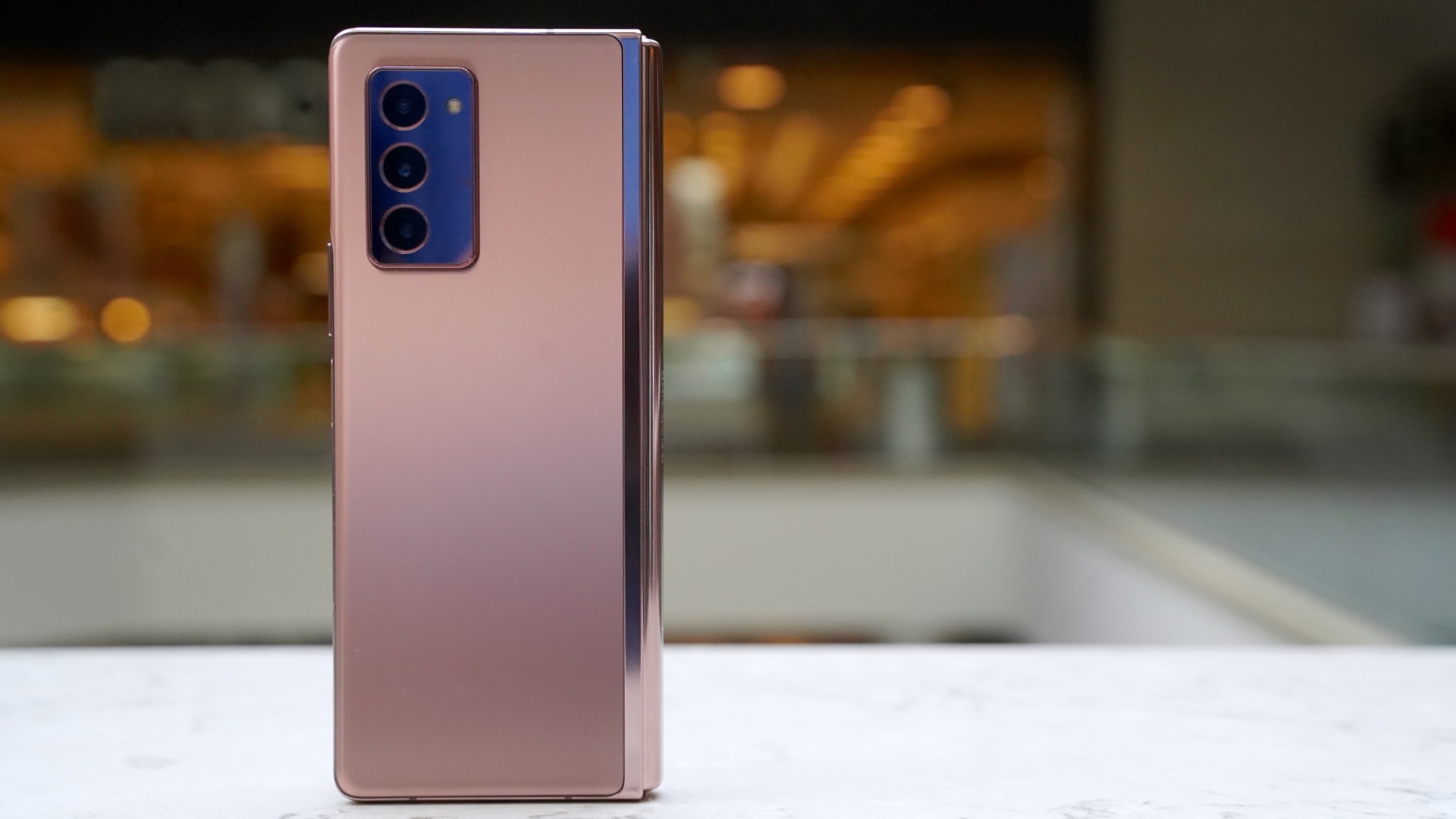
- Rear:
- Standard: 12MP ƒ/1.8, 1.8μm, 83-deg. FOV Dual-pixel AF, OIS
- Ultra wide: 12MP ƒ/2.2, 1.12μm, 123-deg. FOV
- Telephoto: 12MP ƒ/2.4, 1.0μm, 45-deg. FOV PDAF, OIS
- Front:
- 10MP sensor ƒ/2.2, 1.22μm, 80-deg. FOV
- Internal:
- 10MP sensor ƒ/2.2, 1.22μm, 80-deg. FOV
- Video:
- 4K at 60FPS
Samsung did exactly what it needed to in simplifying and improving the camera experience on the Z Fold 2. Not only is the software better across the board, but so is the overall performance of the cameras themselves.
The most significant difference between last year’s phone and this year’s phone is the utility of the Cover Display. The original outer display of the Galaxy Fold was an odd shape and that made it hard to frame shots. Now that the screen is larger and a more usable shape, it acts as a full viewfinder that can handle all the shooting modes and features of the camera application. Moreover, the settings and functionality of the camera app are the same between the inner and outer screens.
Double press the screen lock button and the camera pops open on the Cover Display. It’s the same app that’s found on the S20 and Note 20 lines, which means you should be able to adjust easily if you’re coming from another Samsung phone. I spent an afternoon shooting the Vessel in NYC and found the experience of using the outer display to be perfect. While it is easier to frame shots on the larger inner display, holding the phone when open for shooting photos is a bit awkward.
The big trick this time around is the ability for you to use the outer display and inner display at the same time for shooting photos. This lets the person you’re photographing see a preview of the photo you’re about to take. Alternatively, you can rely on the outer display and use the main camera lens rather than the selfie camera to take a picture of yourself. It’s awkward as heck to do this, but the results are great.
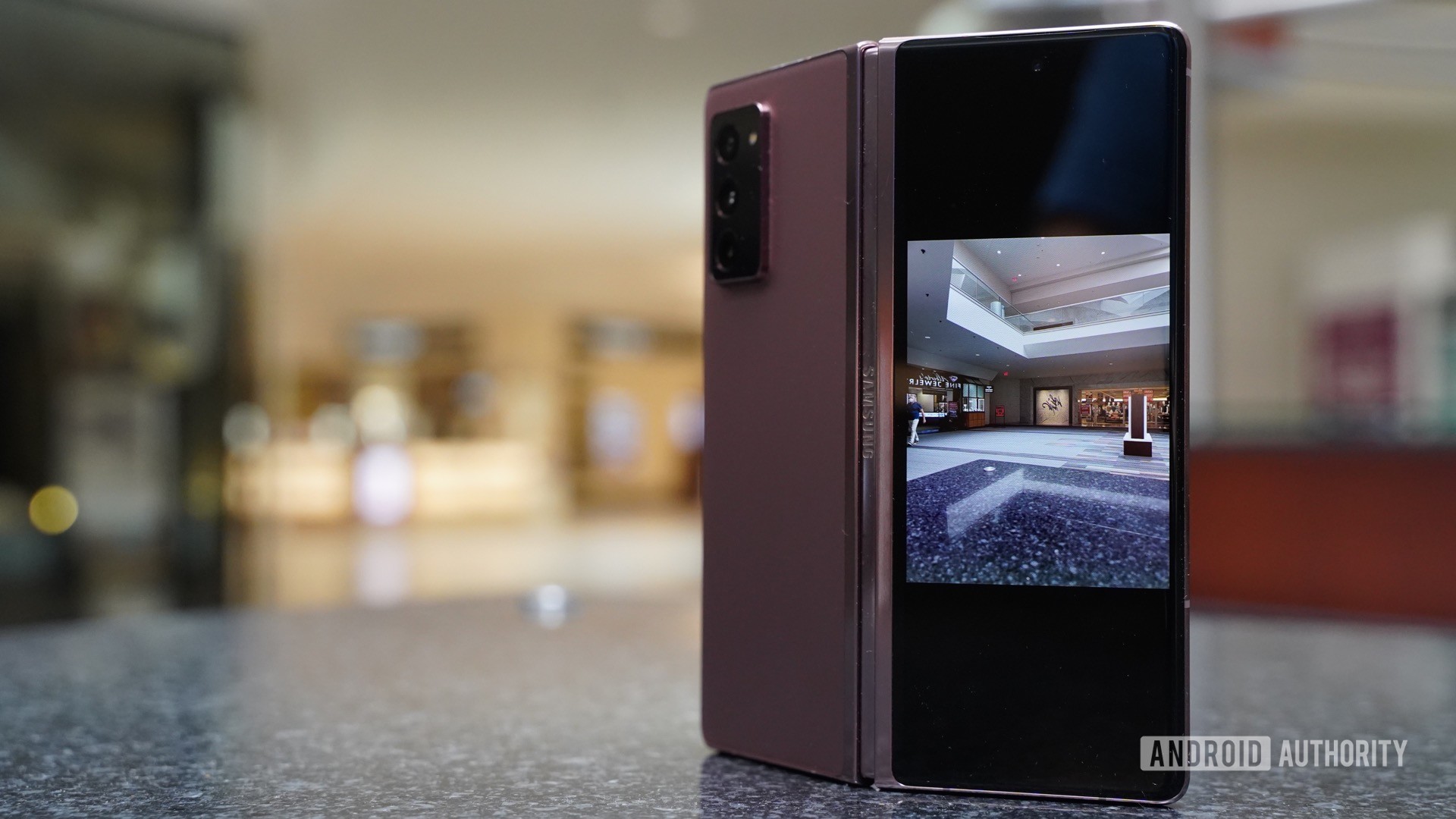
The Samsung Galaxy Z Fold 2 has five cameras: three on the back, one on the front, and one on the inside.
The Samsung Galaxy Z Fold 2 has five cameras: three on the back, one on the front, and one on the inside. That’s a lot of cameras. The triple-camera array on the back is a trio of 12MP shooters to cover the standard, wide-angle, and telephoto duties. Samsung skipped the super high-resolution 108MP sensor found on the S20 Ultra and Note 20 Ultra and I’m okay with that decision.
In general, I found the photos from the Z Fold 2 to be very good. Colors are a bit oversaturated, as is the norm for a Samsung phone, but they aren’t as overboard as we’ve seen in the past. The color profile is similar to what we saw on the Note 20 Ultra camera, which is to say mostly accurate, with noticeably boosted greens.
Focus is excellent. There’s no time-of-flight sensor or laser assistance, but the dual-pixel AF system does well enough. I was pleased with the sharpness of photos across the board. Very few looked soft.
Noise is kept in check. There is some evidence of noise here and there, but Samsung’s HDR processing helps minimize grain in shadowy sections. You can see a bit of over sharpening in the shots I took around the Vessel, but the majority of them are clean. The same goes for the shots I took in the woods. The images are clean enough to see all the detail in the rock.
I like how wide the wide-angle sensor is, though it introduces noticeable optical distortion. I was able to get some really fun shots of the Vessel with the wide-angle. The telephoto lens works well through about 4x, but the 10x zoom level is pretty rough. You can see how soft and muddy-looking the 10x photos are below.
The two selfie cameras aren’t quite as good. I noticed a bit of halo-ing around light sources. Images appears to be softer, and there’s a touch more noise. Even so, portraits show clean lines around people with appropriately blurred backgrounds. I like that the selfie camera has two viewing angles, which lets you fit in a few more people when needed.
Video is limited to 4K at 60fps, which should be more than enough for most people. The results I achieved were quite good. The Z Fold 2 delivered plenty of color, sharp detail, and accurate white balance. Sound capture was good, too, with stereo effects coming through clearly.
Related: The best phone cameras
Full resolution samples are available here.
Extras
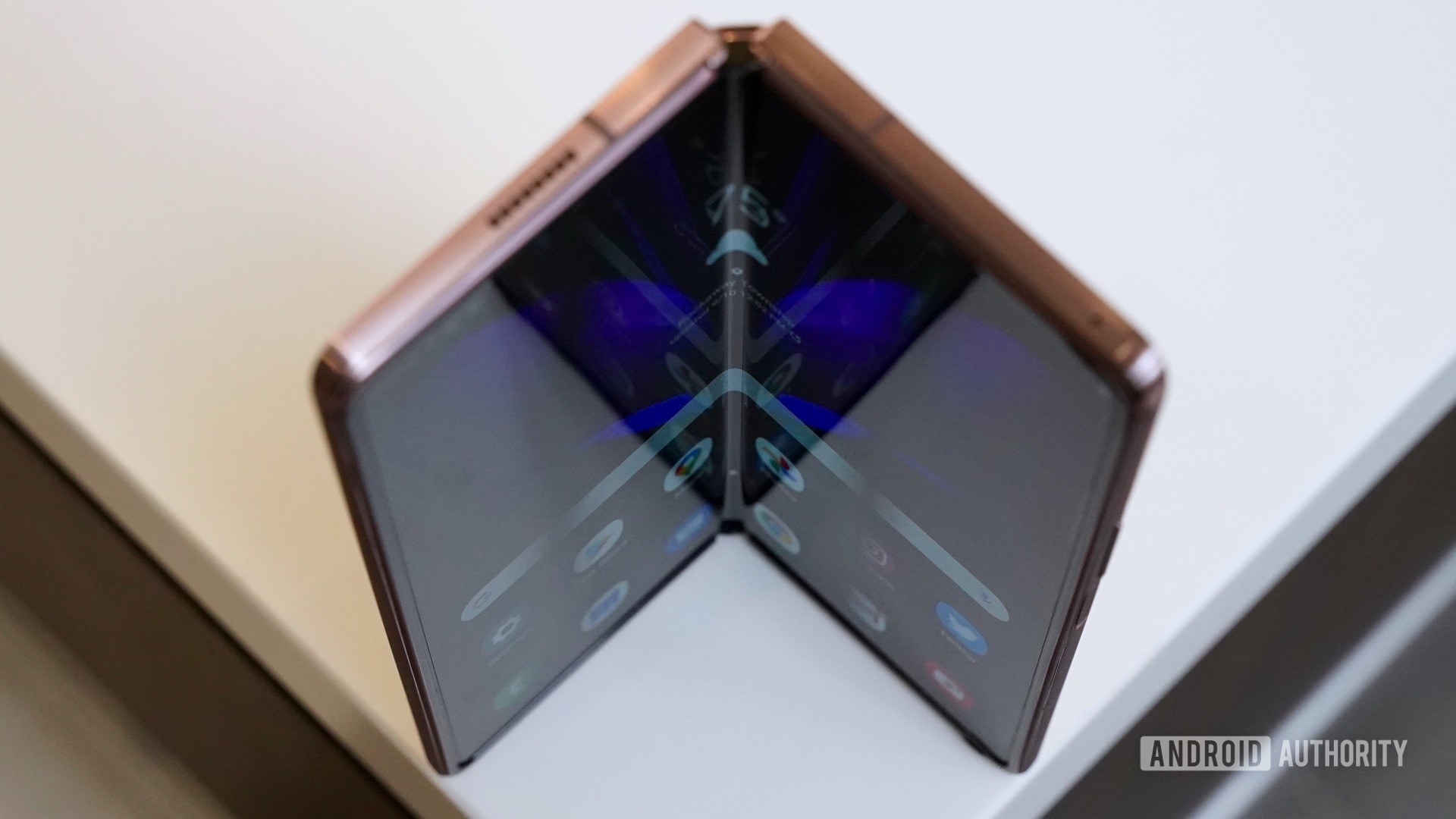
5G
The phone supports the 5G networks of all the major carriers, but that means different things for different carriers. AT&T and T-Mobile mostly offer mid-band, or sub-6GHz, 5G. Verizon, on the other hand, relies on mmWave. We tested the Z Fold 2 on Verizon’s mmWave 5G in NYC and came away impressed with the raw speeds. Sadly, Verizon’s mmWave network is hard to find. Think of the Z Fold 2’s 5G support more as future proofing than a feature for today.
Audio
The Z Fold 2 may not have a headphone jack, but it has excellent stereo speakers. Technically speaking, the speakers are located on the top and bottom edges of the phone. However, when you rotate the Fold and use it more like a tiny laptop, it creates the stereo effect we all expect from high-end phones. The speakers are quite good. I was impressed with the clarity and punch of the sound. Moreover, the phone supports Bluetooth 5.o and most high-end codecs for your favorite true wireless headphones.
In the box
A few disappointing changes year over year. The original Galaxy Fold included both a slim case for the phone as well as the Galaxy Buds true wireless headphones. Neither of those is boxed with the phone this year. That means you’ll have to look to third party suppliers for a case. Samsung is offering those who preorder the phone a $150 discount on accessories, which is enough to pick up the headphones. Just something to keep in mind. Samsung hasn’t said how long the promotion will be available to Z Fold 2 shoppers.
Galaxy Z Fold 2 specs
| Samsung Galaxy Z Fold 2 | |
|---|---|
Displays | Exterior: 6.2-inch HD+ AMOLED 2,260 x 816 resolution 386ppi 25:9 aspect ratio 60Hz refresh rate Interior: 7.6-inch QXGA+ AMOLED 2,208 x 1,768 resolution 373ppi 22.5:18 aspect ratio 120Hz refresh rate |
CPU | Qualcomm Snapdragon 865 Plus |
GPU | Adreno 650 |
RAM | 12GB |
Storage | 256GB UFS 3.1 built-in No expandable storage |
Power | 4,500mAh dual-battery Fast-wired charging Wireless charging Reverse wireless charging |
Cameras | External front: 10MP sensor ƒ2.2, 1.22μm, 80-degree FOV External rear: 12MP wide-angle ƒ1.8, 1.8μm, 83-degree FOV Dual-pixel AF, OIS 12MP ultra-wide ƒ2.2, 1.12μm, 123-degree FOV 12MP telephoto ƒ2.4, 1.0μm, 45-degree FOV PDAF, OIS Internal: 10MP sensor ƒ2.2, 1.22μm, 80-degree FOV |
Connectivity | Sub-6GHz and mmWave 5G Wi-Fi 802.11a/b/g/n/ac/ax HE80 MIMO Bluetooth 5.0 MST and NFC |
Security | Capacitive fingerprint sensor (side-mounted) |
Audio | Stereo speakers Dolby Atmos-certified No headphone jack |
Operating system | Android 10 |
Dimensions | Folded: 68.0 x 159.2 x 16.8mm (at hinge) Unfolded 128.2 x 159.2 x 6.9mm (at frame) |
Weight | 282g |
Colors | Mystic Black, Mystic Bronze |
Value and competition
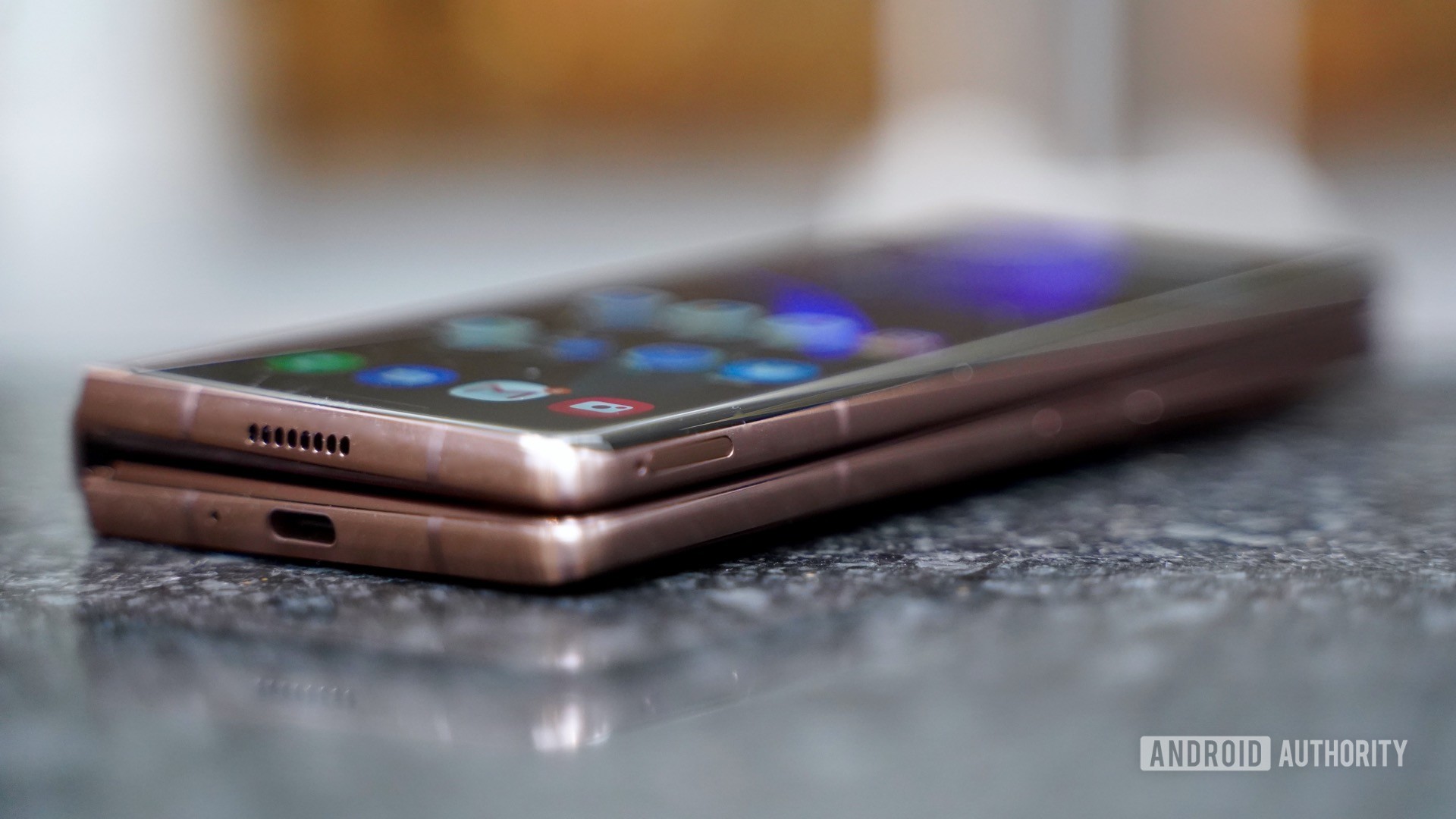
- Samsung Galaxy Z Fold 2: 12GB RAM, 256GB storage — $1999.99
The Samsung Galaxy Z Fold 2 sure costs a lot. That makes it valuable, but not necessarily a great value. The vast majority of consumers spend less than $1,000 on their smartphones, let alone $2,000.
Considering the dramatic improvements Samsung has achieved year over year, it’s clear the Z Fold 2 is a better investment than the original phone. It has a better design, better materials, and better build quality. Sure, you’re losing out on the included Galaxy Buds, but Samsung is making up for that in a small way via the $150 in freebies when you preorder. But $2,000? For a phone? That’s more than I’d spend on a laptop. There’s no real value here in the traditional sense. The Z Fold 2 remains a luxury purchase.
Those who preorder can score some rebates as long as you’re willing to trade in an old phone. For example, sending back the original Fold nets you $800 toward the Z Fold 2. That makes the price tag a lot more palatable.
As for the competition, well, few phones play in this space. Right now the most direct competitor is the Microsoft Duo, which we do no think is worth the $1,400 investment. Same goes for the insanely expensive HUAWEI Mate XS. If you want two screens, but don’t want to break the bank, your best bet is either the $900 LG V60 or the $700 LG Velvet, both of which are available with an optional display case that adds a second screen. These don’t offer the app continuity of the Z Fold 2, but if screen real estate is your main goal LG’s devices are the most affordable way to buy in.
The Z Flip 5G and new Motorola Razr 5G are other foldables to consider, but these don’t proffer the two-screen experience.
Samsung Galaxy Z Fold 2 review: Should you buy it?
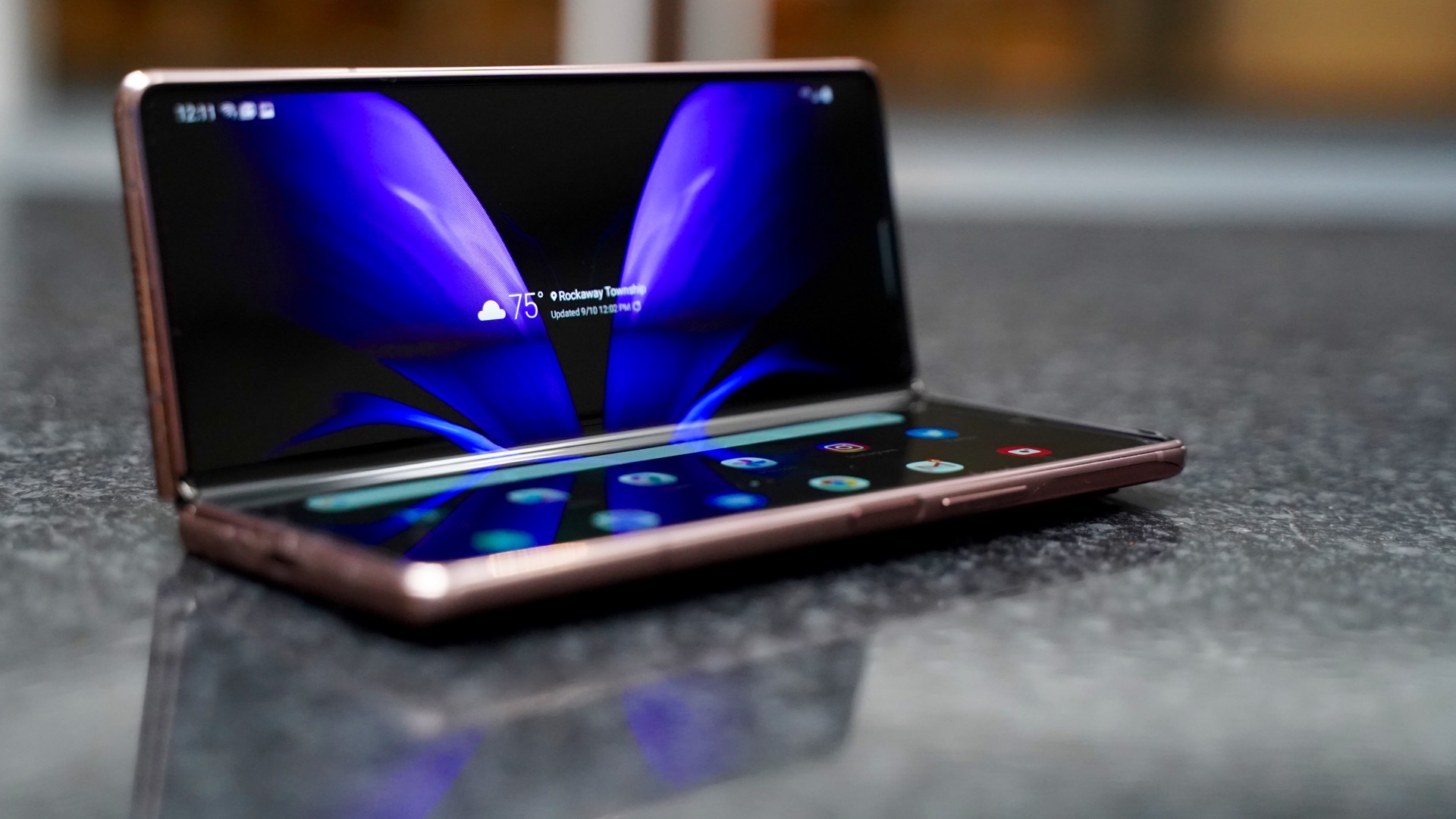
The Samsung Galaxy Z Fold 2 is an outstanding piece of hardware that also gets the software experience just right. Samsung made all the needed changes to its premiere folding phone and solidified the idea that a phone can also be a tablet.
The new and improved Cover Display is pretty much perfect for quick use cases and notification triaging. The refreshed hinge design is smoother and more useful thanks to its ability to hold any position. Samsung traded in plastic for glass for the main display and the difference is palpable. The upgraded metals and glass also go a long way to legitimizing the phone. There’s no getting around its size, and it will take people some time to get used to the idea of opening it to use the tablet-sized display, but the hardware is there.
The hardware and software are both on point.
So, too, is the software. Apps transition between the outer and inner displays seamlessly, allowing you to continue tasks as you move from one to the other. The large main screen provides more than enough real estate to run three apps together for the best in multitasking.
What are the drawbacks? Size, for starters. It’s a gigantic phone. It’s also not water resistant, doesn’t have a headphone jack or expandable storage, and is perhaps more fragile than other phones. Oh. Then there’s the price. The phone costs a whopping $2,000. The closest competing phones that fold are in the $1,400 range. Samsung’s insurance for the phone costs a painful $12 per month. It’s crazy expensive and doesn’t offer any real value for money, in the way people expect.
Should you buy the Samsung Galaxy Z Fold 2? If you have $2,000 and want something different, absolutely yes.
